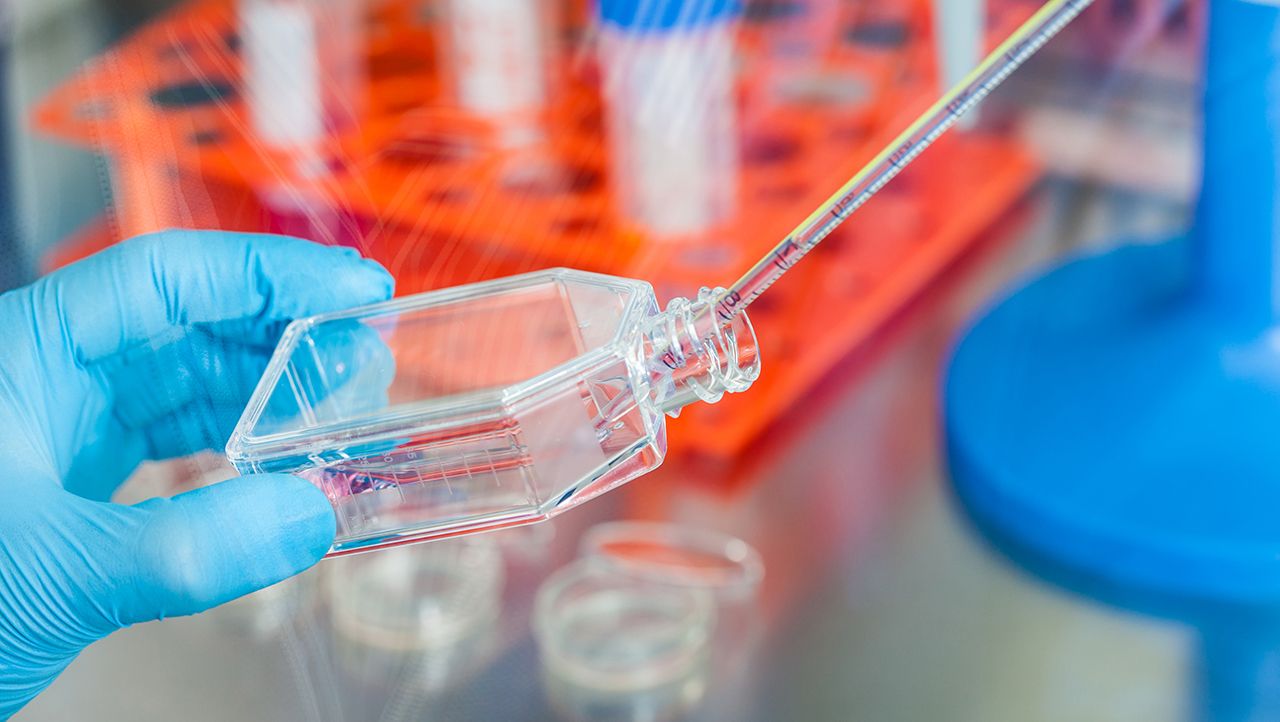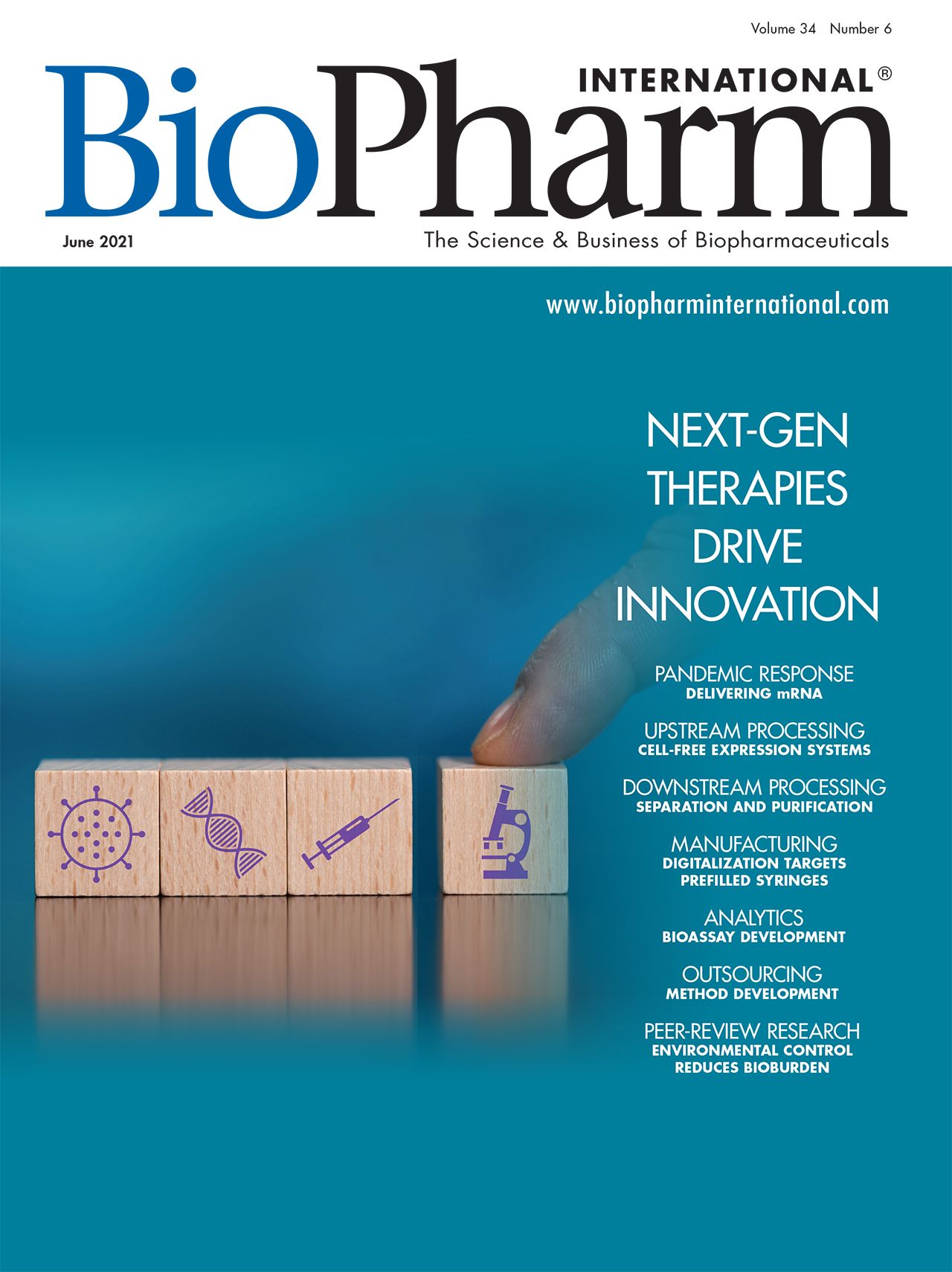Cell-free Expression Systems Pose Cell Culture Alternative
Cell-free expression is promising in preclinical applications, but still presents challenges to scale up for commercial production.
anamejia18/Stock.Adobe.com

Among the challenges in upstream bioprocessing is the cellular waste generated as a by-product of cell culture. One approach that potentially offers the benefit of a “cleaner” biologic product in upstream processing is the use of cell-free expression systems. By producing less waste upstream, there is the potential benefit of having less burden downstream in the separation and purification steps. However, the practicality of using cell-free expression systems in the commercial manufacture of biologics requires proper assessment.
Traditional cell culture struggles
Traditional cell culture systems continue to deal with challenges, a major one being waste disposal, confirms Tim Ding, senior scientist in the Antibody and Protein Production Division at Creative Biolabs, a US-based custom service provider of antibody production and engineering. In the prolonged process of biologic production, the dying cells will inevitably release cytosolic content to the culture medium, essentially “contaminating” the batch and introducing heterogeneity. The lysing event also risks ruining the production because of the protease that are released, which will also increase the workload for downstream separation and purification, Ding says.
Traditional cell-culture based biomanufacturing is a mature technology; however, it is tied to a living cell, which necessitates a great deal of complexity. That complexity ranges from the creation of a master cell bank all the way to manufacturing at scale, product recovery and purification, and, finally, product formulation, according to a group commentary provided by James Swartz, James H. Clark professor in the School of Engineering and professor of Chemical Engineering and Bioengineering, Stanford University; Michael Jewett, Walter P. Murphy professor of Chemical and Biological Engineering and director of the Center of Synthetic Biology, Northwestern University; Matthew DeLisa, the William L. Lewis professor of Engineering and director of the Cornell Institute of Biotechnology, Cornell University; and Govind Rao, professor of Chemical, Biochemical, and Environmental Engineering and director of the Center for Advanced Sensor Technology, University of Maryland Baltimore County.
The professors explain that protein therapeutics (biologics) produced by cell culture face limitations, such as high product variability created by glycoform (micro- and macro-) heterogeneity; difficulty in engineering glycosylation pathways because of cell viability constraints; the inability to completely decouple cell growth from protein synthesis; and inconsistency in batch-to-batch runs based on the inherent variability in living cellular factories.
Limitations also include expensive centralized facilities, which are needed for good manufacturing practice (GMP); limited volumetric productivities due to the need to propagate cells in batch-mode bioreactors; and a timeframe of at least 18 months to go from finalized DNA-customized cells to commercial-scale volumes of product, according to the professors.
Cell-free in cell culture
“Cell-free systems offer an alternative approach that can address these limitations in traditional cell-based cell culture,” says Jewett. “They shorten design–build–test–learn cycles and enable portable, on-demand biomanufacturing at the point-of-use.”
“Recent technical advances in cell-free protein synthesis technologies have been shown to promote increased yields of therapeutically relevant proteins/glycoproteins,” says Swartz. The professors point to studies of these technical advances that have shown the following results:
Protein yields exceed grams of protein per liter of reaction volume; batch reactions last multiple hours; and reaction scale has reached 100 L (1)
- Cost-effective energy metabolism has been realized (2)
- Industrial applications are being advanced (3)
- Protein screening workflows have been accelerated (4)
- Controllable glycosylation reactions have been integrated with cell-free expression (5)
- More than 50 therapeutic glycans have been synthesized (6)
- Engineered strains that produce homogenous human N- and O-glycans have been developed and used to source lysates for cell-free expression (7)
- Medicines have been manufactured using on-demand, portable platforms comprised of detoxified lysates that contain endotoxin levels well below those in FDA-approved products (8,9).
“While transformative breakthroughs have set the stage to create a disruptive protein biosynthesis technology, gaps still exist,” Rao cautions.
The primary advantage of a cell-free system is speed (hours versus days or weeks to express product), simplicity (non-living system, hence easier to deal with), single-product expression (typically, only one gene product is being expressed, unlike the entire genome in a living cell), and, finally, potential for distributed and just-in-time biomanufacturing by virtue of using lyophilized cell extracts, the professors state. The professors collectively believe that cell-free protein expression offers increased control and flexibility compared to traditional cell-based bioprocessing. DeLisa also emphasizes that “cell-free biomanufacturing technology could enhance disaster responsiveness, enable timely response to emergent/pandemic threats, facilitate diagnostic development, and enable distributed biomanufacturing globally.”
Ding adds that the fact that no extra energy is “wasted” to maintain cell proliferation and survival in cell-free synthesis is another advantage. “The energy and nutrients in the cell-free systems are used exclusively to make desired biologic products. Thus, this high-efficiency expression could be theoretically achieved at very high yield per volume. On the other hand, minimal waste or contaminants are produced during the expression, which allows for a much easier purification process,” he states.
Cell-free expression comprises three major components, explains Ding:
- An energy source (i.e., an energy regenerating apparatus)
- Building blocks, such as nucleotides, amino acids etc.
- Transcription/translation machinery.
“Of course, you need to add a DNA/RNA template to initiate the expression. But the overall system is much simpler than living cells. During a short period of time, the system can make protein biologics with high efficiency with minimal by-products, and you don’t have to worry about proteolytic of recombinant protein caused by proteases (since they are already ‘dead’),” Ding confirms.
This paradigm-shifting concept of cell-free protein synthesis also circumvents cellular mechanisms that have evolved to facilitate species survival, bypasses limitations on molecular transport across the cell wall, and enables consistent product quality by avoiding stochastic cell growth issues, the professors comment. In addition, Jewett notes that “the ability to readily store, distribute, and activate freeze-dried cell-free systems by simply adding water or one of a catalog of freeze-dried plasmid DNA templates opens new opportunities for on-demand, agile, and modular biomanufacturing.”
Scale up potential
Scale-up of cell-free expression technologies is already seeing implementation. Companies, such as Sutro Biopharma, a US-based clinical-stage drug discovery, development, and manufacturing company, for instance, are already making microbial cell-free extracts and products at scale as well as having several products in clinical trials for which GMP compliance has been demonstrated, the professors state. Meanwhile, LenioBio, a Germany-based biotechnology company specializing in protein expression solutions, is making plant cell extracts. Swiftscale Biologics, another US-based company, is building the infrastructure to help creative drug developers advance previously impractical drug programs using cell-free biomanufacturing, the professors explain.
Cell-free expression poses significant potential, Ding says. “For preclinical, we’ve already seen quite a lot of antibody production and high-throughput expression screening done in lab scale. But for clinical, the scale-up production is still under development. As early as 2011, J.F. Zawada et al. have successfully scaled up Escherichia coli (E. coli) cell-free expression of cytokines to 100 L (10),” Ding says.
Some additional challenges remain, however, such as “increasing cell-free protein expression yield by specifically increasing adenosine triphosphate (ATP) availability, increasing protein translation rates, increasing supporting metabolism by strain engineering, optimizing bioreactor design, among others,” highlights Swartz.
Furthermore, according to Ding, the cell-free system has trouble in post-translational modification (PTM), presenting another challenge. “While the E. coli platform does not provide PTM at all, in fact, even in a wheat germ system or other eukaryotic systems, the PTM is still a concern for protein heterogeneity. Something might affect GMP regulation and their application for clinical/therapeutic purposes,” he cautions.
While historically it is true that the E. coli platform does not provide PTMs, Jewett and DeLisa have recently began addressing this constraint. Specifically, they have developed high-throughput experimentation platforms to design protein glycosylation sites and modularly construct glycosylation pathways. “In the last five years,” DeLisa comments, “these E. coli-based cell-free platforms have facilitated the synthesis of more than 50 therapeutically relevant glycans, including demonstrating portable, inexpensive, and rapid biomanufacturing of protective glycoconjugate vaccines without a cold chain (11).”
With GMP manufacturing already established with the work done by Sutro Biopharma, scale up of cell-free expression technologies is moving in the right direction. Additional factors may need to be considered to take cell-free approaches to the next level of efficiency and to advance the economics of the technology as well as to advance distributed production, the professors say. “New technologies are therefore needed, in addition to potential changes to regulations, to adapt to the real-time release paradigm that cell-free biomanufacturing enables,” Rao adds. He compares the evolution of cell-free technologies to other disruptive innovations, such as personal computers and smartphones, and says, “It takes more time for a paradigm shift to become widely accepted in the highly regulated biopharma industry.”
New technologies still needed, according to the professors, include automated, closed-loop, artificial intelligence- and machine-learning-driven prototyping methods to accelerate optimization of protein expression, folding, and therapeutic activity. New technologies for rapid, in-line assessments of product concentration, potency, and purity are also needed. Meanwhile, new analytical, quality assurance, and regulatory approaches are needed to implement lot testing and control of DNA and cell-free extract quality, such that product quality is ensured but lengthy cell-banking procedures are removed, the professors state.
While new technologies are being developed, Jewett adds that he “anticipates that cell-free systems will promote better access to medicines through decentralized production. The future is bright.”
References
1. A.D. Silverman, A.S. Karim, and M.C. Jewett, Nat Rev Genet 21, 151–170 (2020).
2. M.C. Jewett, et al., Molecular Systems Biology 4, 220 (2008).
3. B.C. Bundy, et al., Current Opinion in Chemical Engineering 22, 177–183 (2018).
4. T. Hadi, et al., Sci Rep 10, 10279 (2020).
5. T. Jaroentomeechai, et al., Nat. Commun. 9, 2686 (2018).
6. J.M. Hershewe, W. Kightlinger, and M.C. Jewett, Journal of Industrial Microbiology and Biotechnology 47 (11) 977–991 (2020).
7. J.M. Hershewe, et al., Nat. Commun. 12, 2363 (2021).
8. J.C. Stark, et al., Science 7 (6) eabe94442021 (2021).
9. R. Adiga, et al., Nat Biomed Eng 2, 675–686 (2018).
10. J.F. Zawada, et al., Biotechnology and Bioengineering 108 (7) 1570–1578 (2011).
11. J.C. Stark, et al., Science Advances 7 (6) eabe9444 (2021).
About the author
Feliza Mirasol is the science editor for BioPharm International.
Article Details
BioPharm International
Vol. 34, No. 6
June 2021
Pages: 22–23, 35
Citation
When referring to this article, please cite it as F. Mirasol, “Cell-free Expression Systems Pose Cell Culture Alternative,” BioPharm International 34 (6) 2021.
